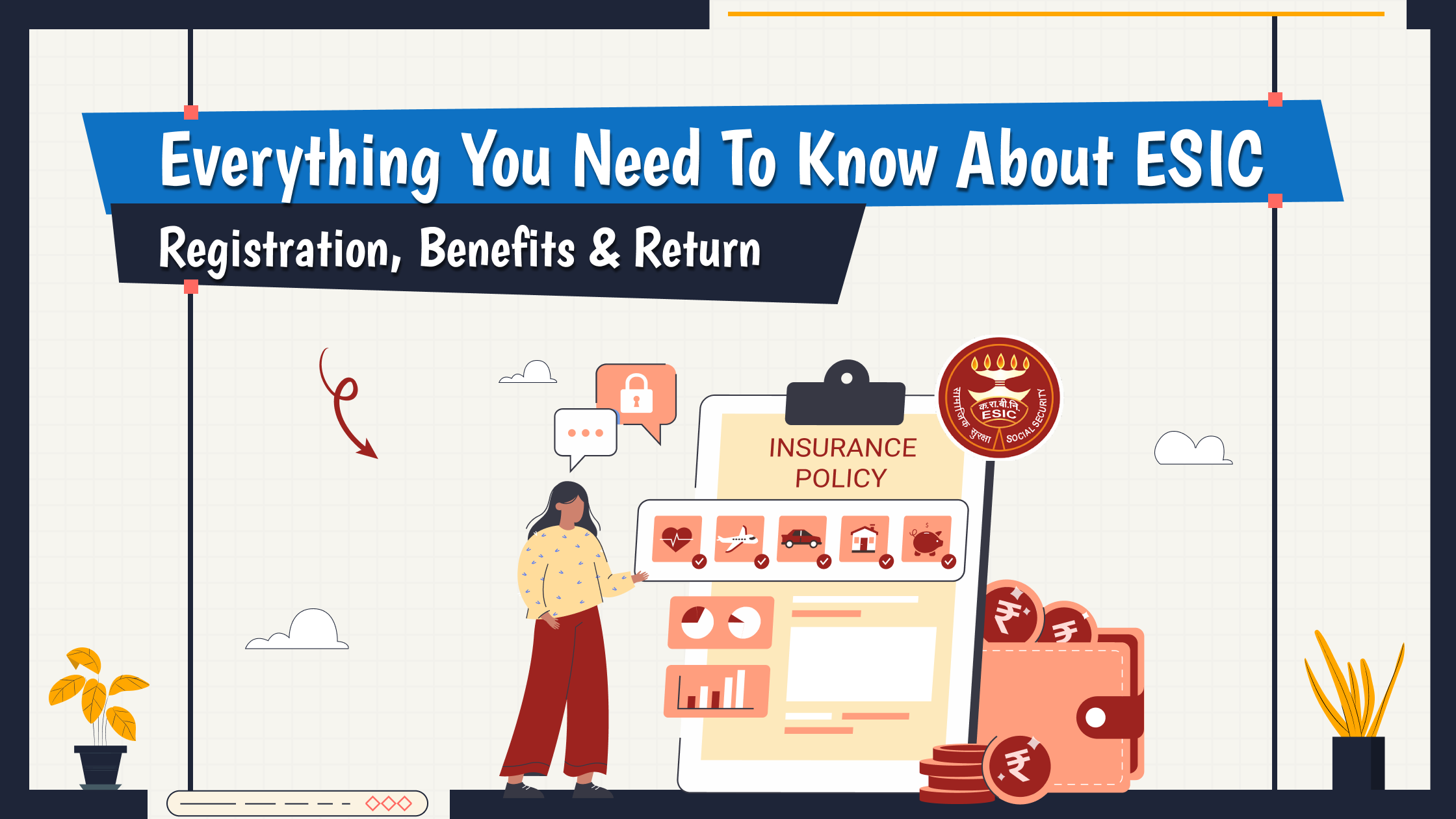UBS App is now Superworks

ESIC is an abbreviation of Employee’s State Insurance Corporation.
Many people don’t know about the exact procedure of ESIC registration, benefits, and penalty. This blog focuses on ESIC registration fees, and the ESIC registration process, if you don’t have an answer to these questions then it’s the right place to get the right one.
So, this is a basic term and every state provides Employee State Insurance (ESI) registration to employees and their families in order to provide some level of security. An Employee State Insurance Corporation a body governed by the ESI Act 1948 provides this registration.
ESI was the first significant Act on employee social security which was established on some principles. So first of all know some fundamentals regarding ESIC.
Employee State Insurance (ESI) is administered by an autonomous organization ESIC- Employee State Insurance Corporation in Ministry of Labor and Employment of the Government of India. ESI Act is entitled to give major benefits like monetary, medical and etc to employees. Employees and employers both have to contribute to the ESI program.
Any company with more than 10 employees (in some states, 20 employees) earning between 15,000 to 21,000 Rs. has to register itself with the ESIC within 15 days of its application date.
In this case, the employer has to contribute 4.75% of the entire monthly salary payable to the employee, whereas the employee has to contribute 1.75% of his monthly salary every month under this act. Only Employees who are earning less than 137 Rs. per day are excused from paying their contribution.
Top 7 HR Metrics that Startups and Small Businesses Must Track
| Employer Contribution | Employee Contribution | Total |
| 4.75 % of the salary | 1.75 % of the salary | 6.50% of the salary |
| Contribution For The First 2 Years In Some Implemented Areas | ||
| 3% | 1% | 4% |
| Contribution Period | Benefit Period | |
| October- March | July- December | |
| April- September | January- June | |
Here is the list of essential documents submitted by the employer for ESIC Registration which you can find here only.
Under ESIC rule, a person who enrolls in ESI gets insurable employment. This means he or she will get full medical care for him and his family members as well.
Also, sickness benefits are given in the form of cash to ESI that has taken a person at the time of sickness which results in absence at work. However, the insured person has to submit a medical certificate certified by an “Insurance Medical Officer” at the time of sickness.
To take these benefits, you need to consider these conditions,
Here is the process of ESIC registration,
For ESIC registration, employers must have an account on the ESIC Portal.
Just click on the “Sign Up” button and consider “Employer Login” on the home screen. Press the button and make the account.
The employer will receive an email confirmation on the email address. Confirm email and mobile number during registration. Now, the employee or employer needs to add login information included in the email to do login.
After login in by adding a username and password from the email, you will redirect to the next page. It will change to “New Job”, select ‘New employer registration’ from the drop down menu. Fill in the all details; choose ‘Unit Form’ from the drop-down menu and then press the ‘Submit’ button.
Check the ‘Register of Employers’ form, and fill in the details. It has both employer and employee details. Finish the registration by clicking on the ‘Submit’ button.
After submitting the Form-1, the employer will be directed to the ‘Payment of Advance Contribution’ tab. At their employers, they must input the amount to be paid and select the payment mechanism.
The employer gets the system-generated Registration Letter (C-11) with a 17-digit Registration Number after the employer successfully pays the six-month advance contribution.
The ESI registration scheme was established to provide social security and it is good to do financial help to employees who actually need it. It helps employees and their families from financial hardships by covering unforeseeable occurrences related to their and their family’s health.
UBS can help every employer by giving a major benefit – automated statutory compliance. Now, you don’t need to consider all these details as an employer or HR, the UBS payroll system can handle all this easily.
We are here to help you find a solution that suits your business need.
Get a visual representation of how we work!
Schedule DemoOur sales expert is just one call away to meet your needs.
Get In TouchHave a question?
Chat with Us